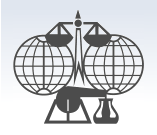International Union of Pure and Applied Chemistry: Difference between revisions
imported>Milton Beychok (→History: Wrote the Hisrory section. Other sections to follow soon.) |
imported>Milton Beychok m (Wrote History section. More sections to follow soon.) |
||
| Line 7: | Line 7: | ||
The international headquarters office of the IUPAC is located in [[Zurich]], [[Switzerland]]. The administrative office, known as the "IUPAC Secretariat" and headed by the the IUPAC executive director, is located in [[Research Triangle Park]], [[North Carolina]], [[United States]].<ref name=Agenda/> | The international headquarters office of the IUPAC is located in [[Zurich]], [[Switzerland]]. The administrative office, known as the "IUPAC Secretariat" and headed by the the IUPAC executive director, is located in [[Research Triangle Park]], [[North Carolina]], [[United States]].<ref name=Agenda/> | ||
== History == | == History == | ||
In 1782, the [[France|French]] chemist [[Louis-Bernard Guyton de Morveau]] published recommendations for the nomenclature of organic chemicals.<ref>Louis-Bernard Guyton de Morveau (1782), J. Phys. 19: p. 310.</ref> His system was later refined in collaboration with [[Antoine-Laurent Lavoisier]], [[Claude Louis Berthollet]] and other French chemists.<ref>Louis-Bernard Guyton de Morveau, Antoine-Laurent Lavoisier, Claude Louis Berthollet, et al. (1787), [http://imgbase-scd-ulp.u-strasbg.fr/displayimage.php?album=692&pos=4 ''Méthode de Nomenclature Chimique''], Paris: Cuchet.</ref> Their work was also supported by the [[Sweden|Swedish]] chemist [[Jöns Jakob Berzelius]].<ref>Jöns Jacob Berzelius (1811), J. Phys. 73: pp. 253-286.</ref><ref>[http://www.springerlink.com/content/p704jt077r226106/fulltext.pdf Jöns Jacob Berzelius A Guide to the Perplexed Chemist] Jaime Wisniak, Chemical Engineering Department, [[Ben-Gurion University of the Negev]], [[Israel]], published in ''The Chemical Educator'', December 2000, Vol. 5, No. 6, pp. 343-350</ref> | In 1782, the [[France|French]] chemist [[Louis-Bernard Guyton de Morveau]] published recommendations for the nomenclature of organic chemicals.<ref>Louis-Bernard Guyton de Morveau (1782), J. Phys. 19: p. 310.</ref> His system was later refined in collaboration with [[Antoine-Laurent Lavoisier]], [[Claude Louis Berthollet]] and other French chemists.<ref>Louis-Bernard Guyton de Morveau, Antoine-Laurent Lavoisier, Claude Louis Berthollet, et al. (1787), [http://imgbase-scd-ulp.u-strasbg.fr/displayimage.php?album=692&pos=4 ''Méthode de Nomenclature Chimique''], Paris: Cuchet.</ref> Their work was also supported by the [[Sweden|Swedish]] chemist [[Jöns Jakob Berzelius]].<ref>Jöns Jacob Berzelius (1811), J. Phys. 73: pp. 253-286.</ref><ref>[http://www.springerlink.com/content/p704jt077r226106/fulltext.pdf Jöns Jacob Berzelius A Guide to the Perplexed Chemist] Jaime Wisniak, Chemical Engineering Department, [[Ben-Gurion University of the Negev]], [[Israel]], published in ''The Chemical Educator'', December 2000, Vol. 5, No. 6, pp. 343-350</ref> | ||
Revision as of 14:47, 16 February 2010
The International Union of Pure and Applied Chemistry (IUPAC) is a non-governmental scientific organization serving to advance all aspects of the chemical sciences and to contribute to the international application of chemistry by scientists, engineers and others. It is an association of organizations, called "National Adhering Organizations", which represent the chemists of different member countries. As of July 2009, there were 54 "National Adhering Organizations" plus some other countries that are linked to IUPAC as "Associate National Adhering Organizations".[1][2]
The international headquarters office of the IUPAC is located in Zurich, Switzerland. The administrative office, known as the "IUPAC Secretariat" and headed by the the IUPAC executive director, is located in Research Triangle Park, North Carolina, United States.[1]
History
In 1782, the French chemist Louis-Bernard Guyton de Morveau published recommendations for the nomenclature of organic chemicals.[3] His system was later refined in collaboration with Antoine-Laurent Lavoisier, Claude Louis Berthollet and other French chemists.[4] Their work was also supported by the Swedish chemist Jöns Jakob Berzelius.[5][6]
Guyton de Morveau's recommendations covered only what today we refer to as inorganic compounds. With the massive expansion of organic chemistry in the mid-nineteenth century and the greater understanding of the structure of organic compounds, the need for a better system of nomenclature was felt. An international conference was convened in Geneva in 1892 by various European national chemical societies, from which the first widely accepted proposals for standardization arose.[7]
In 1911, the International Association of Chemical Societies (IACS) met in Paris in 1911 and produced a set of proposals for standardization of chemical nomenclature, physical constants and physical properties work that the association should address.[8] A commission of the association was set up for that purpose in 1913 but its work was interrupted by World War I. After the war, in 1919, chemists from academia and industry formed the International Union of Pure and Applied Chemistry (IUPAC) and the task of standardization was passed to them. The IUPAC first appointed commissions for organic, inorganic and biochemical nomenclature in 1921 and continues to do so to this day.[9]
IUPAC Divisions
Nomenclature books
Standards
Congresses and other meetings
References
- ↑ 1.0 1.1 IUPAC Council Agenda Book, July 2009]
- ↑ National Adhering Organizations From the new website of the IUPAC, accessed on February 15th, 2010.
- ↑ Louis-Bernard Guyton de Morveau (1782), J. Phys. 19: p. 310.
- ↑ Louis-Bernard Guyton de Morveau, Antoine-Laurent Lavoisier, Claude Louis Berthollet, et al. (1787), Méthode de Nomenclature Chimique, Paris: Cuchet.
- ↑ Jöns Jacob Berzelius (1811), J. Phys. 73: pp. 253-286.
- ↑ Jöns Jacob Berzelius A Guide to the Perplexed Chemist Jaime Wisniak, Chemical Engineering Department, Ben-Gurion University of the Negev, Israel, published in The Chemical Educator, December 2000, Vol. 5, No. 6, pp. 343-350
- ↑ "Congrès de nomenclature chimique, Genève 1892", Bull. Soc. Chim. Paris, Ser. 3, 7: pp. xiii-xxiv, 1892.
- ↑ About IUPAC History section.
- ↑ International Year of Chemistry - 2011, Chemistry - our life, our future Prospectus and Introduction
